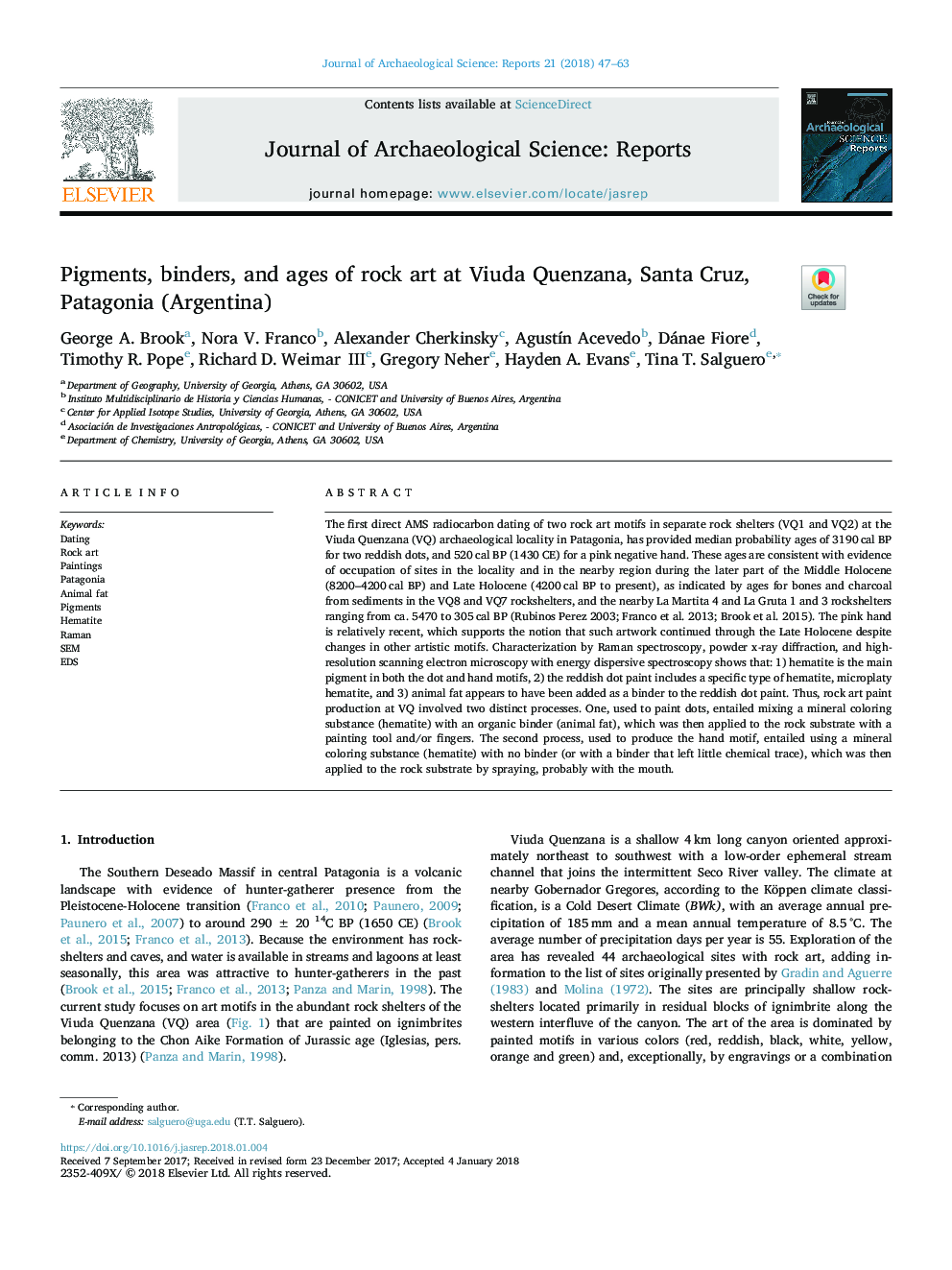| کد مقاله | کد نشریه | سال انتشار | مقاله انگلیسی | نسخه تمام متن |
|---|---|---|---|---|
| 7443862 | 1483922 | 2018 | 17 صفحه PDF | دانلود رایگان |
عنوان انگلیسی مقاله ISI
Pigments, binders, and ages of rock art at Viuda Quenzana, Santa Cruz, Patagonia (Argentina)
دانلود مقاله + سفارش ترجمه
دانلود مقاله ISI انگلیسی
رایگان برای ایرانیان
کلمات کلیدی
موضوعات مرتبط
علوم انسانی و اجتماعی
علوم انسانی و هنر
تاریخ
پیش نمایش صفحه اول مقاله

چکیده انگلیسی
The first direct AMS radiocarbon dating of two rock art motifs in separate rock shelters (VQ1 and VQ2) at the Viuda Quenzana (VQ) archaeological locality in Patagonia, has provided median probability ages of 3190â¯cal BP for two reddish dots, and 520â¯cal BP (1430 CE) for a pink negative hand. These ages are consistent with evidence of occupation of sites in the locality and in the nearby region during the later part of the Middle Holocene (8200-4200â¯cal BP) and Late Holocene (4200â¯cal BP to present), as indicated by ages for bones and charcoal from sediments in the VQ8 and VQ7 rockshelters, and the nearby La Martita 4 and La Gruta 1 and 3 rockshelters ranging from ca. 5470 to 305â¯cal BP (Rubinos Perez 2003; Franco et al. 2013; Brook et al. 2015). The pink hand is relatively recent, which supports the notion that such artwork continued through the Late Holocene despite changes in other artistic motifs. Characterization by Raman spectroscopy, powder x-ray diffraction, and high-resolution scanning electron microscopy with energy dispersive spectroscopy shows that: 1) hematite is the main pigment in both the dot and hand motifs, 2) the reddish dot paint includes a specific type of hematite, microplaty hematite, and 3) animal fat appears to have been added as a binder to the reddish dot paint. Thus, rock art paint production at VQ involved two distinct processes. One, used to paint dots, entailed mixing a mineral coloring substance (hematite) with an organic binder (animal fat), which was then applied to the rock substrate with a painting tool and/or fingers. The second process, used to produce the hand motif, entailed using a mineral coloring substance (hematite) with no binder (or with a binder that left little chemical trace), which was then applied to the rock substrate by spraying, probably with the mouth.
ناشر
Database: Elsevier - ScienceDirect (ساینس دایرکت)
Journal: Journal of Archaeological Science: Reports - Volume 21, October 2018, Pages 47-63
Journal: Journal of Archaeological Science: Reports - Volume 21, October 2018, Pages 47-63
نویسندگان
George A. Brook, Nora V. Franco, Alexander Cherkinsky, AgustÃn Acevedo, Dánae Fiore, Timothy R. Pope, Richard D. III, Gregory Neher, Hayden A. Evans, Tina T. Salguero,